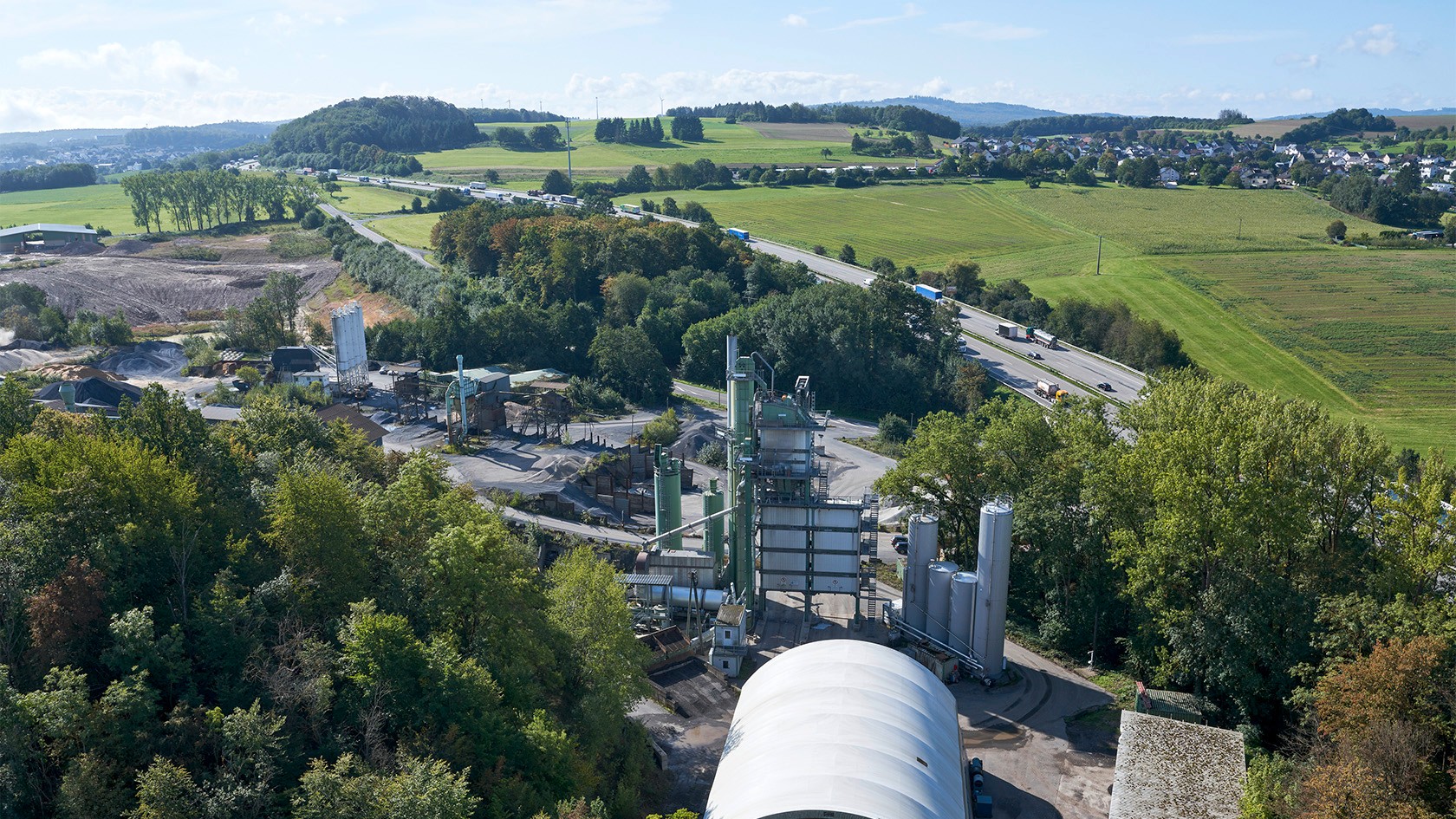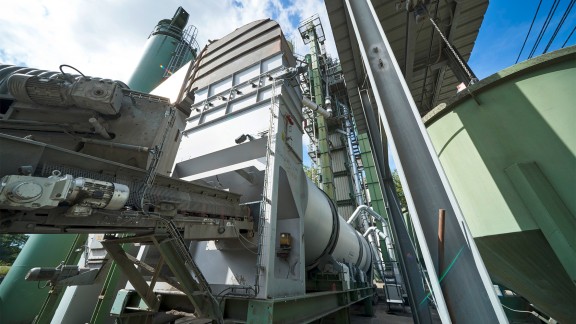High rates of recycling while keeping emissions low? Yes, it’s possible!
There are two key factors for sustainable asphalt production. On the one hand, recycling feed rates need to be increased: this conserves resources and makes good use of reclaimed material. As the proportion of reclaimed asphalt added rises, less fresh bitumen is needed, which works to shrink the carbon footprint. On the other hand, strict TC limit values need to be observed in Germany, with “TA-Luft” requiring <50 mg/m³ to be met in accordance with climate legislation.
Previously, reclaimed asphalt has been easily incorporated into the production process by utilizing cold or hot recycling techniques. However, this approach results in higher emissions of total carbon (TC) in the form of VOCs (volatile organic compounds). This is because heating reclaimed asphalt causes some of the TC present to evaporate out of the bitumen contained in the asphalt. These VOCs are more potent greenhouse gases than CO₂ and are also hazardous to health at higher concentrations.
In the past, trying to reconcile high recycling rates for reclaimed asphalt with the need to avoid environmental impacts was effectively impossible. Thanks to the powerful REVOC system, the two aspects can now be consolidated: reducing TC emissions by up to 50% and implementing higher recycling rates of up to 60%.










